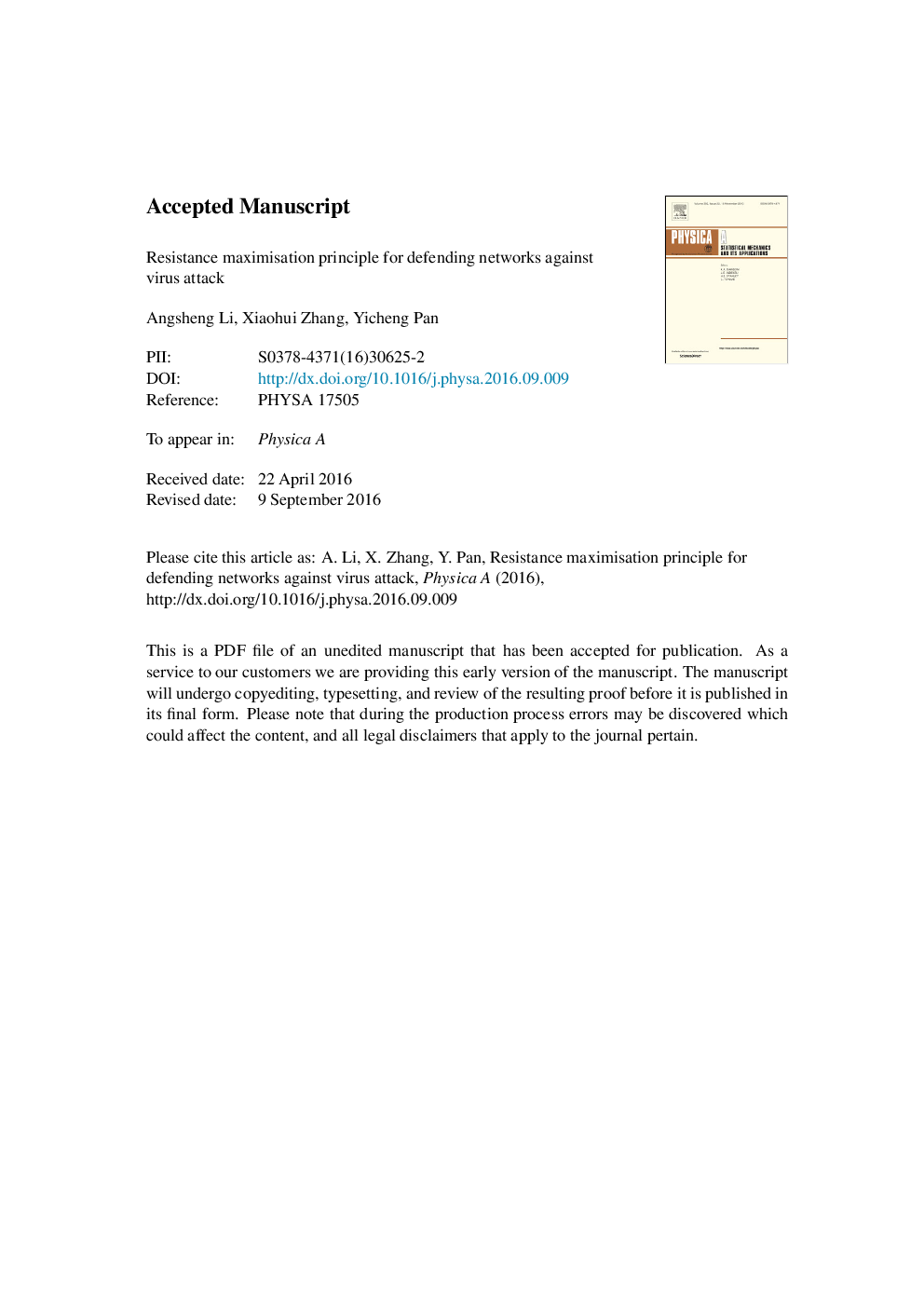| Article ID | Journal | Published Year | Pages | File Type |
|---|---|---|---|---|
| 5103299 | Physica A: Statistical Mechanics and its Applications | 2017 | 33 Pages |
Abstract
We investigate the defending of networks against virus attack. We define the resistance of a network to be the maximum number of bits required to determine the code of the module that is accessible from random walk, from which random walk cannot escape. We show that for any network G, R(G)=H1(G)âH2(G), where R(G) is the resistance of G, H1(G) and H2(G) are the one- and two-dimensional structural information of G, respectively, and that resistance maximization is the principle for defending networks against virus attack. By using the theory, we investigate the defending of real world networks and of the networks generated by the preferential attachment and the security models. We show that there exist networks that are defensible by a small number of controllers from cascading failure of any virus attack. Our theory demonstrates that resistance maximization is the principle for defending networks against virus attacks.
Related Topics
Physical Sciences and Engineering
Mathematics
Mathematical Physics
Authors
Angsheng Li, Xiaohui Zhang, Yicheng Pan,
